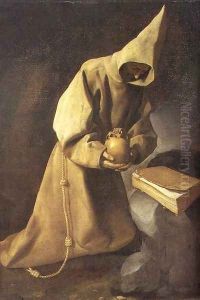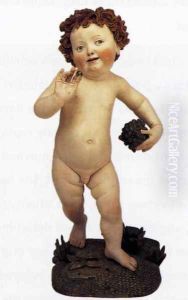Nicolaus Gerhaert Van Leyden Paintings
Nicolaus Gerhaert van Leyden, also known as Claus Sluter's successor, was a sculptor of Dutch origin, widely regarded as one of the principal sculptors of late Gothic Europe. Despite the scarcity of surviving works conclusively attributed to him, Gerhaert is considered a pivotal figure in the transition from Gothic to Renaissance art.
Born around 1420 in or near the city of Leiden in the northern Netherlands, little is known about Gerhaert's early life or training. He emerged as a master sculptor in the mid-15th century, by which time he had moved to the Holy Roman Empire, where he worked in several regions, including Strasbourg and Vienna.
Gerhaert's style combined the realism and emotional intensity characteristic of Northern European art with an innovative approach to form and space, anticipating the Renaissance interest in the human figure and naturalism. He is particularly noted for his expressive and detailed portrayal of human anatomy and physiognomy. His work also exhibits a profound understanding of drapery and its interaction with the human body, lending his figures a remarkable sense of vitality.
Among Gerhaert's most significant contributions to sculpture is the way he incorporated a viewer's perspective into his works, considering how a piece would be seen from multiple angles. This represented a significant departure from the more static and frontal pieces typical of the earlier Gothic tradition.
Gerhaert's influence extended across Europe thanks to his travels and the dissemination of his style. His most famous surviving work is the tomb of Emperor Frederick III in the Stephansdom in Vienna, which showcases his mastery of form and detail. Although he was widely celebrated in his time, his exact influence on later artists is hard to trace due to a lack of signed or documented works.
Nicolaus Gerhaert van Leyden died in 1473, leaving behind a legacy that would be recognized by art historians as foundational for the developments in European sculpture that followed. His work has been studied and admired for its innovative and transitional qualities that bridge the late Gothic and early Renaissance periods.

